24/7 Customer Assistance
24/7 Assistance with the best medical care at your service
Call us for any question
+91 90858 83067Gurgaon,Haryana, India, 122001
IndiaOffice Hour: 09:00am - 09:00pm
info@medigocare.com



Breast cancer is a disorder when the cells in the breast proliferate uncontrollably. There are various types of breast cancer. The type of breast cancer is determined by which breast cells turn malignant.
Breast cancer may develop in a variety of breast tissues. A breast is made up of three main parts: connective tissue, ducts, and lobules. The lobules are the glands that produce milk. The ducts that carry milk to the nipple are termed. Everything is surrounded by and held in place by the connective tissue, which is composed of fatty and fibrous tissue. Most breast cancers start in the ducts or lobules.
Breast cancer can spread outside of the breast through lymphatic nodes and blood arteries. Breast cancer is said to have spread across the body whenever it affects several body areas.
Breast cancer affects almost exclusively women, although men can also develop breast cancer.
Be sure to visit a physician if you experience any warning signs or symptoms.
Invasive and non-invasive are 2 broad categories of breast cancer.
Non-invasive Breast cancer —
Tumours that occur inside the milk ducts or lobules are non-invasive breast cancer.
Invasive Breast cancer —
Breast cancer that is invasive has reached the tissues around it in addition to the ducts and lobules.
The aggressiveness of each of these broad categories depends on the growth of the tumour. While some grow slowly, others are more aggressive. The biological makeup, size, stage, etc. of a tumour, as well as other characteristics, all have an impact on how aggressive it is. However, inflammatory breast cancer and breast angiosarcoma are typically the most aggressive forms of breast cancer, whereas ductal carcinoma in situ, lobular carcinoma in situ, and phyllodes tumours are typically slower-growing.
DCIS happens when the duct’s cells develop abnormalities. Outside of the duct, the aberrant cells have not invaded other tissues. It’s non-invasive breast cancer. Women are typically advised to have treatment since DCIS has a chance of developing into an aggressive malignancy over time.
LCIS develops when malignant cells within the lobules (milk-producing glands) of the breast do not expand through the lobule walls. Even though LCIS is not a disease, it raises the possibility of breast cancer. As a result, women with LCIS typically have routine exams including mammograms or other imaging.
The most typical kind of breast cancer is IDC. Approximately 80% of all breast cancers are invasive ductal carcinomas, which account for 8 out of 10 cases. IDC starts in the ducts and spreads to the breast tissues close by. IDC has the potential to spread to the lymph nodes and perhaps other parts of the body if untreated.
The second most typical kind of breast cancer is ILC. ILCs make for about 10% of breast cancer cases. ILC spreads to surrounding breast tissue after beginning in the lobules (milk-producing glands) of the breast. ILC can spread to the lymph nodes and perhaps other parts of the body if it is not treated.
Inflammatory breast cancer (IBC) is a rare and severe variety. Because cancer cells are obstructing lymphatic capillaries in the skin, IBC exhibits some inflammatory symptoms like redness and edoema. A lump in the breast or under the arm, pain in the breast or nipple, discharge from the nipple, or a nipple that twists inwards are other signs of IBC. The skin in the breast may also dimple or thicken (like the skin of an orange) (inverted nipple).
The nipple and the region around it are both affected by this uncommon type of breast cancer (areola). Several Paget’s disease sufferers also have breast cancer in other breast tissues. The primary symptoms of Paget’s disease are changes in the nipple and/or areola area of the breast, such as the development of a lump and the area becoming hard, lumpy, or crusty. There may also be redness, discharge, or bleeding from the nipple.
Rare breast cancers called phyllodes tumours initiate in the breast’s connective tissue. Phyllodes tumours are often benign (non-cancerous), but one in four of them is malignant (cancerous). The tumours typically feel like a bump. Since mammograms may not be able to accurately diagnose phyllodes tumours, surgical resection of the entire tumour may be required.
About 1% of all breast cancers diagnosed each year are metaplastic breast cancers (MBC), an uncommon type of disease. MBC is distinguished by the multitude of cell types that compose the tumour, which can make the diagnosis challenging. Additionally, compared to other breast cancer forms, MBC may be more aggressive.
Distinct people will experience different breast cancer signs and symptoms. Some folks completely lack any symptoms or warning indications.
Some signs of breast cancer include—
Be sure to visit a physician if you experience any warning signs or symptoms.
Doctors frequently use additional tests to locate and diagnosis of breast cancer. An expert or breast surgeon may be recommended for women. This does not necessarily mean that surgery is required or that she has cancer. These medical experts are adept at spotting breast problems.
Ultrasound of the breast is done with a device that produces pictures of regions inside the breast—using sound waves.
If you have a breast problem, such as lumps, or if a portion of your breast seems suspicious on a screening mammogram, your doctor might advise getting a diagnostic mammogram. This particular breast X-ray is more detailed.
It’s a body scan technique that utilises a magnet and a computer. Areas inside the breast will be captured in fine detail by the MRI scan.
This test entails removing breast tissue or fluid from the breast for microscopic examination and further testing. Different kinds of biopsies exist (for example, fine-needle aspiration, core biopsy, or open biopsy).
If breast cancer is discovered, additional tests are run to see if the disease has progressed to the breast or to other parts of the body. This is how the staging process works. The stage of your breast cancer depends on whether it has spread to other parts of your body, the lymph nodes under your arm, or both. Depending on the kind and stage of your breast cancer, doctors will decide the best course of treatment for you.
There are numerous treatments for breast cancer. The type of breast cancer and the extent of its spread will determine Breast Cancer Surgery. Multiple types of treatments are frequently given to patients with breast cancer.
There are numerous treatments for breast cancer. The type of breast cancer and the extent of its spread will determine this. Multiple types of treatments / Breast Cancer Surgeries are frequently given to patients with breast cancer.
A procedure where cancerous breast tissue is removed by surgeons.
This is the use of medications to lessen or get rid of cancer cells. The medications can occasionally be given intravenously and orally. The growth of cancers is significantly restricted by chemotherapy. It can be given intravenously or orally. The drugs enter the bloodstream and prevent the growth of cancerous cells. The drug can also be administered directly into the site of the malignant growth. You can find breast cancer chemotherapy cost in india in the below segment.
Hormone treatment prevents hormones that breast cancer cells require for malignant growth from reaching them. It is applied to the treatment of hormone-sensitive breast cancers. Hormone therapy remains the only option for relief if an individual cannot have chemotherapy, surgery, or radiotherapy due to old age or other medical issues. It might endure for up to fifty years.
Biological treatment collaborates with the immune system of your body to combat cancer cells or to manage the negative effects of other cancer treatments.
Radiation treatment destroys breast cancer cells using high-energy beams that are far more effective as compared to X-rays. Radiation therapy might be necessary to stop the spread of cancer cells. Radiation therapy may be required for 3-6 months, with 3-5 sessions per week possible. This can be carried out following a lumpectomy for breast cancer. Radiation therapy for the chest wall is administered following mastectomy. An increased radiation dose is administered after the surgical excision of breast tumours. Cancer cells that have spread to the lymph nodes have been destroyed by lymph node radiation therapy.
Complementary and alternative medicine refers to drugs and medical procedures that aren’t commonly used to treat cancer. Alternative medicine is used in place of established therapies, whereas complementary medicine is used in addition to them. Examples include yoga, meditation, and dietary supplements like vitamins and herbs. Numerous complementary and alternative medical practices lack scientific validation and could not be safe. Before beginning any supplementary or alternative treatment, discuss the risks and advantages with your doctor.
There are two primary surgical procedures used to remove breast cancer:
Breast cancer Details in One Go!
There are 5 standard breast cancer treatment options available in India. Local treatment includes surgery and radiation. If you prefer systematic treatments then 3 therapies are available hormone, chemo and targeted.
Making decisions about your treatment will depend in large part on the stage of your breast cancer.
The majority of women with stage I, stage II, or stage III breast cancer receive surgical treatment, frequently followed by radiation therapy. Additionally, a lot of women receive systemic medication therapy (medicine that travels to almost all areas of the body). In general, you will probably need more treatment the more the breast cancer has spread. However, factors including your personal preferences and more knowledge about your breast cancer can alter your treatment options, such as:
Discuss how these variables may impact your treatment options with your doctor.
Breast cancer can develop in a variety of ways, have diverse origins, and call for a variety of treatments. Some malignancies respond well to particular foods, just as certain cancers respond better to various treatments.
The following foods can contribute to a generally healthy diet and may help stop the onset or progression of breast cancer:
The typical cost of breast cancer therapy in India is between US$2000 and US$7,000 which includes the costs of medications, medical procedures and surgeries. The total breast cancer surgery cost can vary depending on the case.
The sort of therapy employed and the length of the patient’s illness are what decide the breast cancer surgery cost.
The patient must spend three days in the hospital before departing for 15 days.
Some of the tests used to detect breast cancer include the mammogram, breast assessment, breast augmentation, biopsy, PET scan, and MRI.
| City | Cost (INR) |
| Mumbai | Rs.99,000 to Rs.16,50,000 approx. |
| Delhi | Rs.94,500 to Rs.15,75,000 approx. |
| Bengaluru | Rs.90,000 to Rs.15,00,000 approx. |
| Kolkata | Rs.72,600 to Rs.15,10,000 approx. |
| Chennai | Rs.85,500 to Rs.14,27,000 approx. |
| Pune | Rs.90,000 to Rs.15,00,000 approx. |
| Hyderabad | Rs.90,000 to Rs.15,10,000 approx. |
| Ahmedabad | Rs.82,500 to Rs.14,26,000 approx. |
| Surat | Rs.90,000 to Rs.14,30,000 approx. |
| Vishakhapatnam | Rs.90,000 to Rs.15,10,000 approx. |
Note: 5% to 10% variation can happen based on the market.
Treatment-wise price list for breast cancer treatment varies.
Breast surgery price in India varies from hospital to hospital depending on their facilities. Breast lump removal surgery cost in India depends on what kind of surgery they will be doing and where you are doing it, which means the city. If it’s a tier 1 city in that case breast removal surgery cost in India is bit higher.
| Treatment options | Breast cancer treatment Cost in India |
| Lumpectomy therapy for breast cancer cost in India | Rs. 1,56,400 to Rs. 2,14,000 |
| Mastectomy therapy for breast cancer cost in India | Rs. 2,15,500 to Rs. 3,26,000 |
| radiation therapy for breast cancer cost in India | Rs. 1,51,000– Rs. 5,21,000 |
| Chemotherapy therapy for breast cancer cost in India | Rs. 1,61,000 to Rs. 2,80,000 Per cycle |
| Targeted Therapy for breast cancer cost in India | Around Rs. 95,000 |
| Immunotherapy therapy for breast cancer cost in India | Around Rs. 2,15,000 Per Session |
In India top doctors are available for Breast Cancer Treatment. Top Hospitals and clinics in India for Breast Cancer Treatment are equipped with cutting-edge radiation technologies for the treatment of all cancer kinds. Oncologists, doctors, pharmacists, dieticians, and therapists work together in a multidisciplinary team. modern technologies.
Chemotherapy sessions for early-stage breast cancer patients normally last three to six months, though your doctor may change the length based on your unique circumstances. More than six months of treatment may be necessary for advanced breast cancer.
Chemotherapy cycles typically last two to three weeks. The schedule varies based on the medications taken. For instance, certain drugs are only administered with chemotherapy on the first day of the cycle. Others might get it once every two weeks or once a week for a few weeks.
On average, less than 90 days pass between a diagnosis and an operation. Three surgical treatments are frequently used to treat breast cancer: a lumpectomy for breast cancer, Mastectomy for breast cancer and lymph node dissection
Women who have a history of breast cancer in their families, are older than 40, or are exhibiting comparable symptoms should get mammograms at least every 20 years. The key to effective therapy is early disclosure. Women should be aware that early cancer detection has a 100% success rate.
Although there are no proven methods to help prevent breast cancer, some lifestyle changes can reduce the risk factor. Maintaining a healthy weight, leading an active lifestyle, consuming less alcohol, and getting pregnant at the right time are measures that may lower the risk factors.
The link between bras, particularly padded ones, and breast cancer has generated a lot of debate. There are no studies or surveys that demonstrate, nonetheless, that using a padded bra can lead to cancer.
The monthly breast self-exam (BSE) is advised by doctors. When inspecting the breasts, look for dimpling, a palpable lump, puckering, secretion from the nipples, inversion of the nipple, scaliness of the nipple/areola area, and changes in the breast skin. It is advisable to consult a specialist if any of these changes in the breasts are observed.
Rarely, cysts, tumours which are fluid-filled sacs in the breast, can develop into cancer. However, any breast lump should be reported to the doctor right once so they can examine it. In some women, cyclical lumps are also typical. They are cysts that develop ahead of the menstrual cycle and then vanish. Even though they are safe, having them monitored is not harmful.
Breast soreness or pain medically referred to as mastalgia/mastodynia, is frequently linked to menstruation. This is frequently suspected by many women as a breast cancer symptom. It is uncommon for cancer to be the cause of the discomfort, though. But it is advised to seek advice if the pain persists for longer than 3 weeks.
The negative consequences vary from person to person. Nausea, anaemia, mouth sores, changes in appetite, hair loss, exhaustion, infertility, menopause, diarrhoea, and changes in smell or taste are typical adverse effects of chemotherapy.
24/7 Assistance with the best medical care at your service
Quality treatment with professional & unmatched personal care
Our experts make your Communication easier and more transparent


